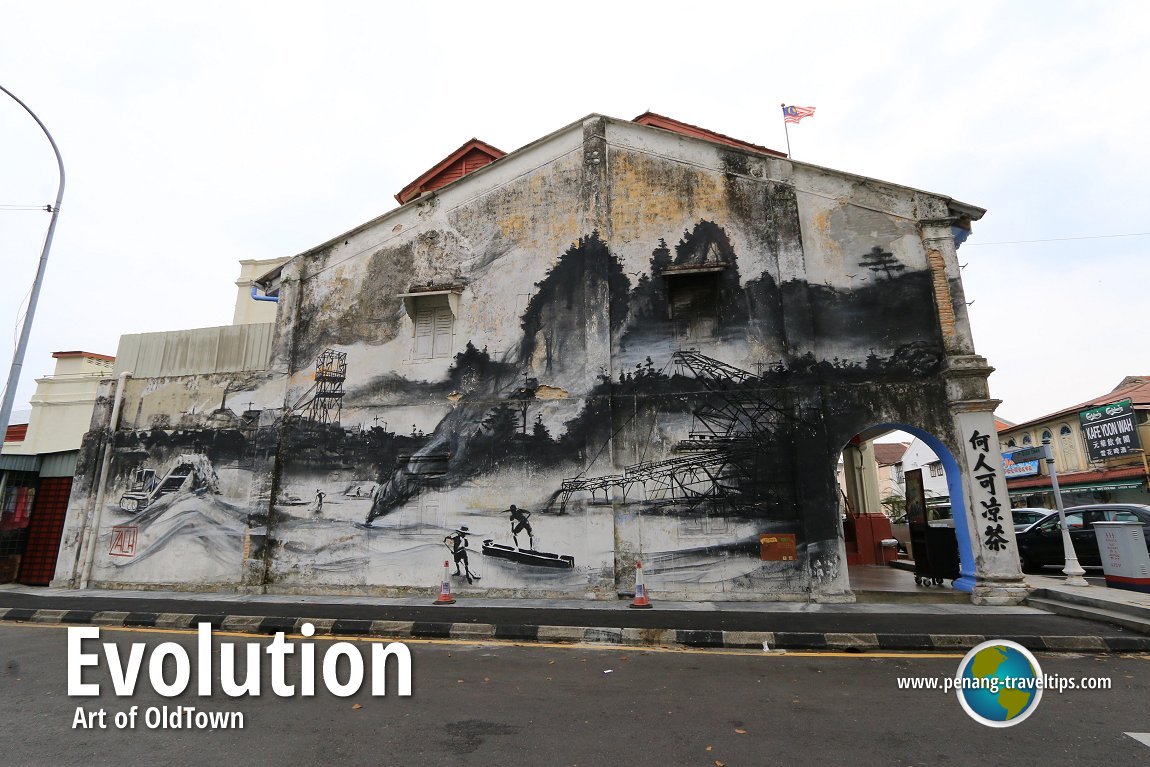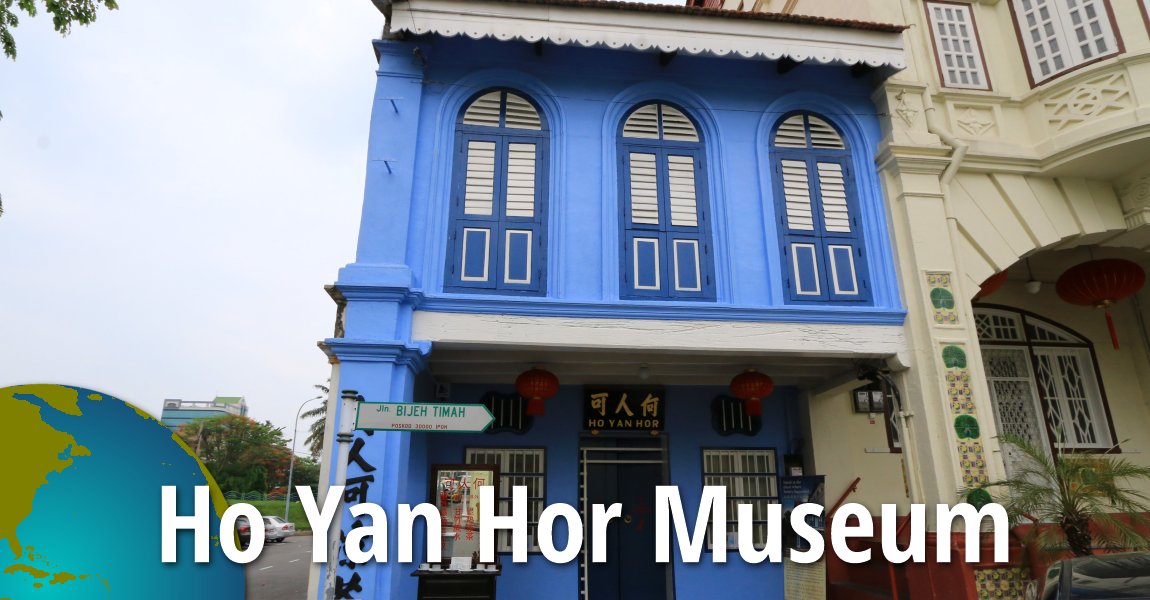 Ho Yan Hor Museum (3 May, 2016)
Ho Yan Hor Museum (3 May, 2016)
Ho Yan Hor Museum (GPS: 4.59634, 101.07905; Chinese: 何人可博物馆; Cantonese Jyutping: Ho4 Jan4 Ho2 Bok3 Mat6 Gun2; Mandarin Pinyin: Hérénkě Bówùguǎn) is a private museum along Jalan Bijeh Timah in Ipoh, Perak. Occupying a two-storey shophouse next to the Han Chin Pet Soo Museum, it is operated by Hovid Berhad, the company that sells medicinal herbal teas under the Ho Yan Hor brand. The museum is a showcase of the company's history, and in particular its founder, the late Dr Ho Kai Cheong, who established Ho Yan Hor and occupied the building as his home and one of its early business premises. Even today (March 2018), the company is still in family hands, and is being run by the founder's eldest son, Mr David Ho.
Address
Ho Yan Hor Museum1, Jalan Bijeh Timah,
Ipoh, Perak.
Phone: +60-5-241 2048
The Ho Yan Hor Museum is open daily from 10:00am to 4:00pm. Admission is free.
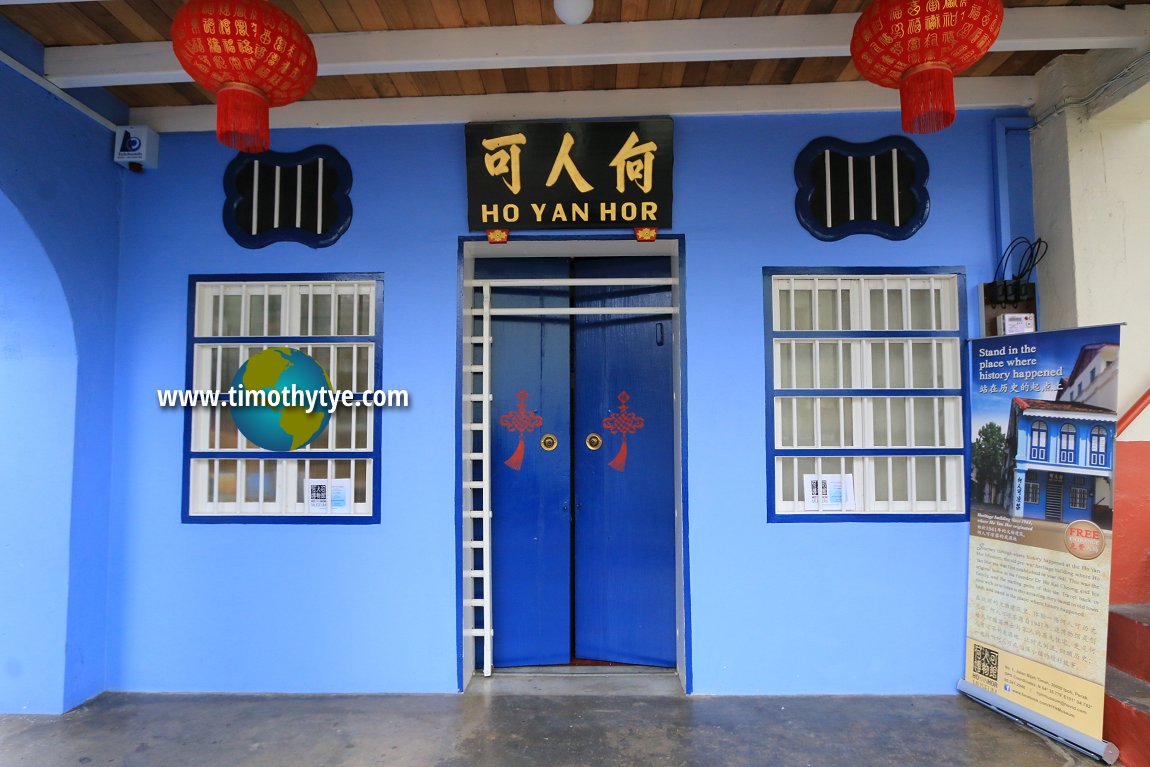 Ho Yan Hor Museum front façade. (11 March, 2018)
Ho Yan Hor Museum front façade. (11 March, 2018)
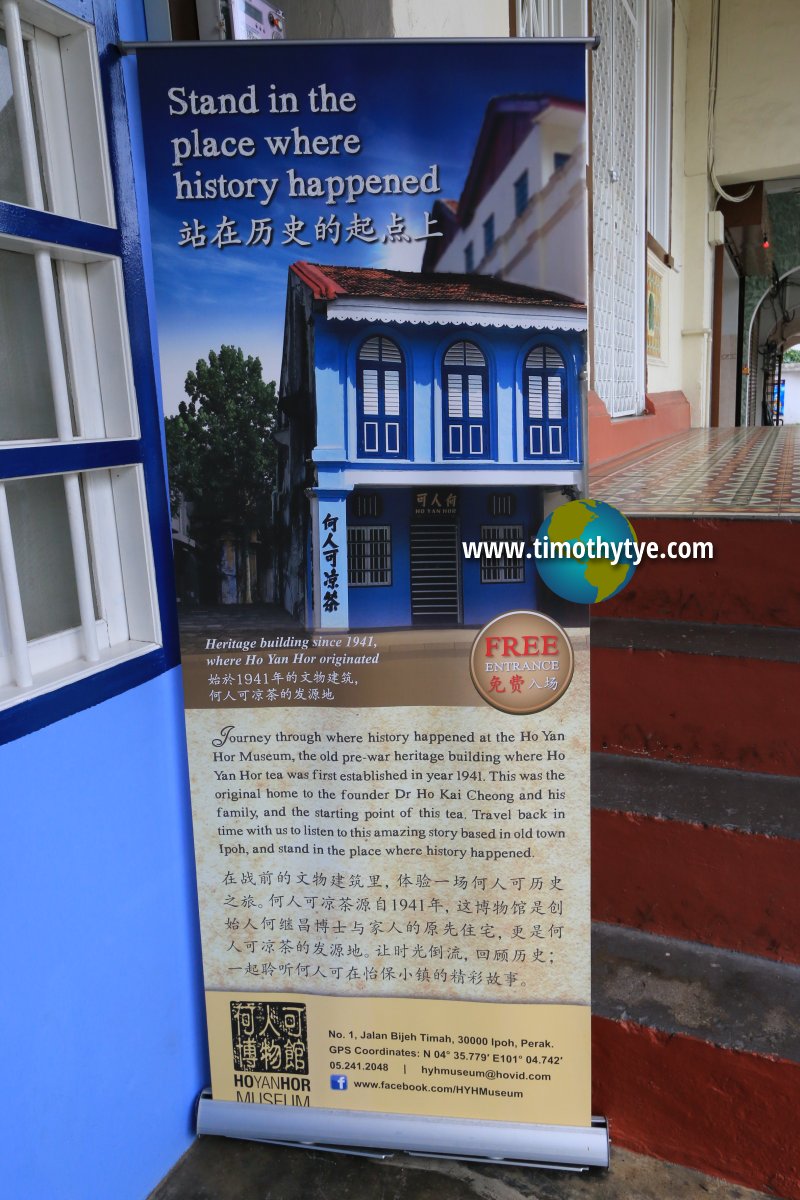 Banner in front of Ho Yan Hor Museum. (11 March, 2018)
Banner in front of Ho Yan Hor Museum. (11 March, 2018)
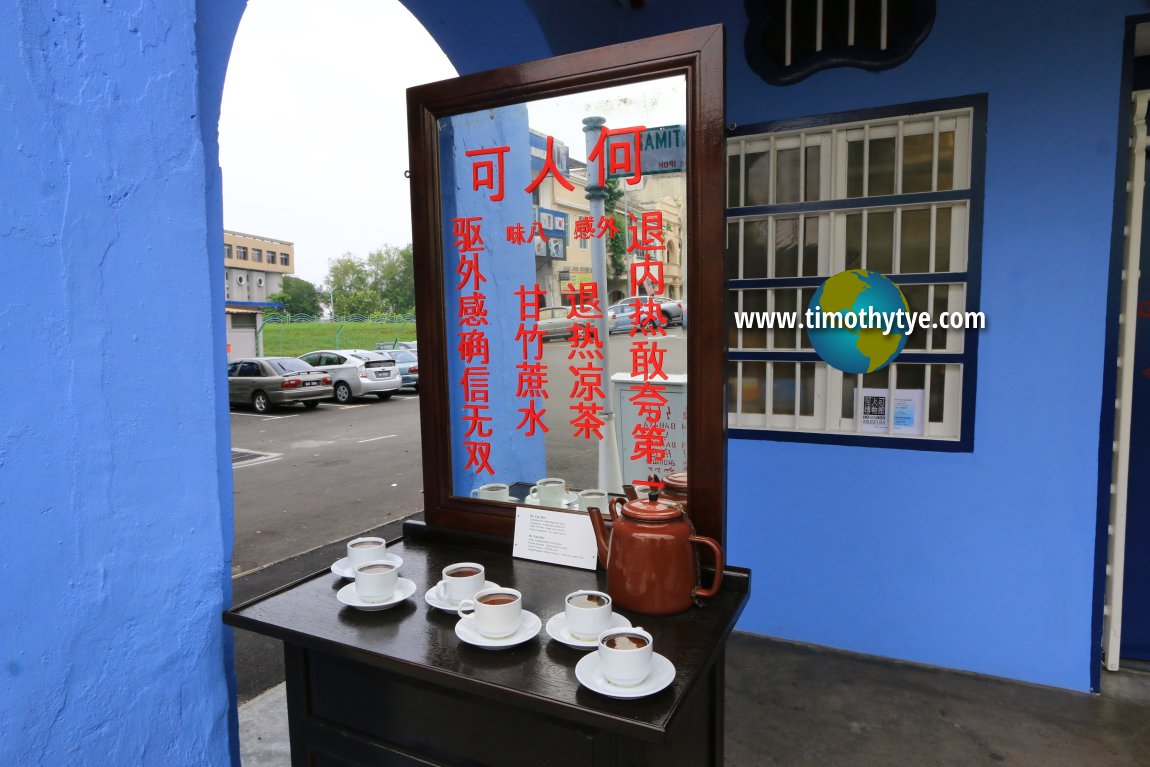 Ho Yan Hor tea kiosk in front of the museum. (11 March, 2018)
Ho Yan Hor tea kiosk in front of the museum. (11 March, 2018)
About the Ho Yan Hor Museum
The Ho Yan Hor Museum opened to the public on 16 January, 2016. The shophouse it occupies dates back to the pre-war period, around the early part of the 20th century. Visitors to the museum are shown the family and business memorabilia. There are interpretive boards offering information on how the Ho Yan Hor brand got started as well as live-size dioramas showing the preparation of medicinal herbal teas.lThe restoration of the building was undertaken by the non-profit organisation IpohWorld under the leadership of Ian Anderson, who was passionately involved in curating the exhibits, with the main contractor being Y Cheng Thymes, a company that usually builds movie sets for film productions. On our visit to Ho Yan Hor Museum, we met up with Mr Anderson, who took us around and provided us first-hand insights into the museum and its restoration.
The Ho Yan Hor Museum is an impressive and comprehensive walk through history. As with Han Chin Pet Soo next door, it is very well done. I learned not only about the Ho Yan Hor medicinal herbal teas, but also the company and the man behind it. I "got to know" Ho Kai Cheong as a person who has a passion for learning, and even at an advanced age returned to the university and eventually received his doctorate.
The ingredients for the Ho Yan Hor herbal teas include various Chinese herbs such as the rhubarb, Manchurian wildginger, Peppermint, Tea plant, Licuorice root and the immature orange fruit, among others.
Today the Ho Yan Hor herbal tea comes in three different packagings. Each has its own properties. The green pack is for rest and recover, and is the original concortion that started the business in 1941. It is for relieving heatiness and common cold.
The blue pack is the night tea. It is for relaxation and winding down. Being caffeine-free, it can be enjoyed in the late afternoon and evening.
The brown pack is also to reduce body heat and cooling down, helping the body achieve internal balance.
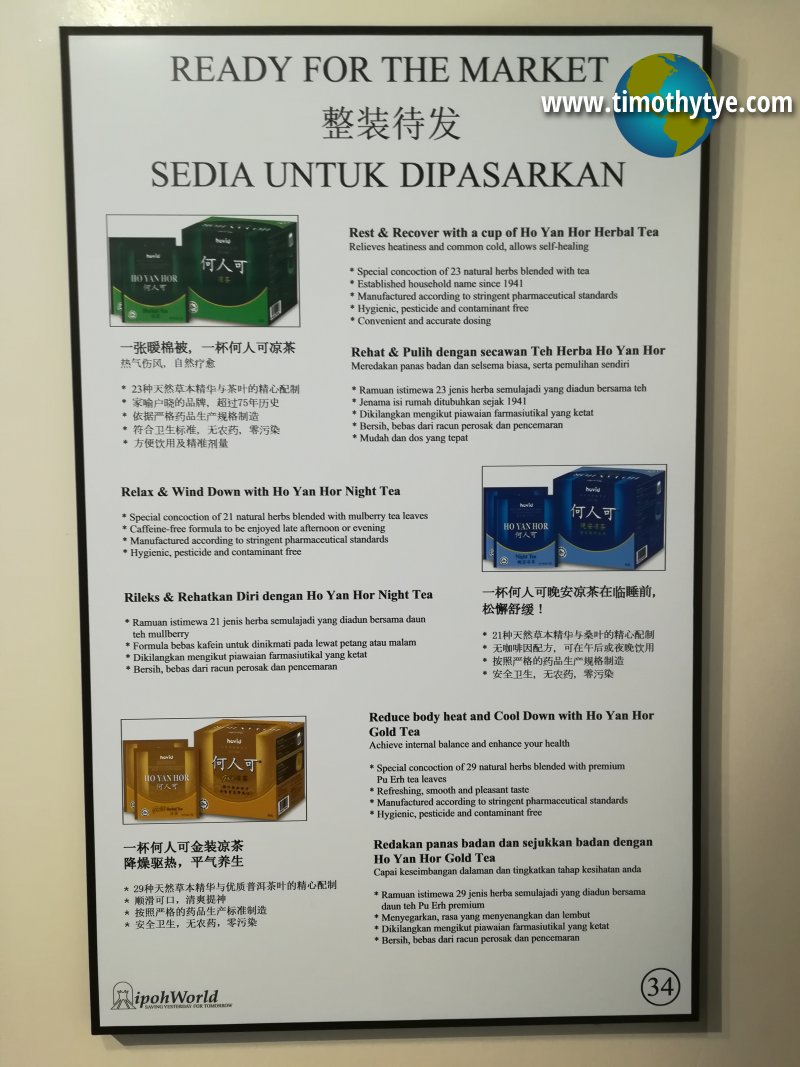 The three main types of Ho Yan Hor herbal tea. (11 March, 2018)
The three main types of Ho Yan Hor herbal tea. (11 March, 2018)
About Ho Kai Cheng, the founder
Dr Ho Kai Cheong was born on 11 July, 1910 in Kati, a mining village located 17km to the north of Kuala Kangsar. His father, Ho Shun Leong, was from Panyu 番禺区, a district of Guangzhou, in Guangdong Province, China. Immigrated to Malaya, the senior Ho ran a coffee shop in the Kuala Kangsar town, where dim sum was sold. At a young age, the young Ho Kai Cheong helped in the coffee shop and learned to make dimsum.Kai Cheong went to Tsung Wah Chinese Primary School (nowadays SJK (C) Tsung Wah, GPS: 4.769646, 100.941520). At the age of 8, he returned to China for this studies. When he came back, he opened a Chinese medicine shop called Weng Zhong Wo Medical Hall 永中和, which operated for a while until 1934, when he decided to return to China to join the Chinese Army in the fight against the Japanese, where he was station in Humen, in Guangdong Province. When Humen fell to the Japanese, he escaped to Hong Kong. There, he continued his studies into Chinese medicine, and graduated from the Canton Wah Lam National Physician's College on 24 December, 1940. Upon graduation, he returned to Perak in 1941, to reside in Malim Nawar, where he became a Chinese physician or sinseh.
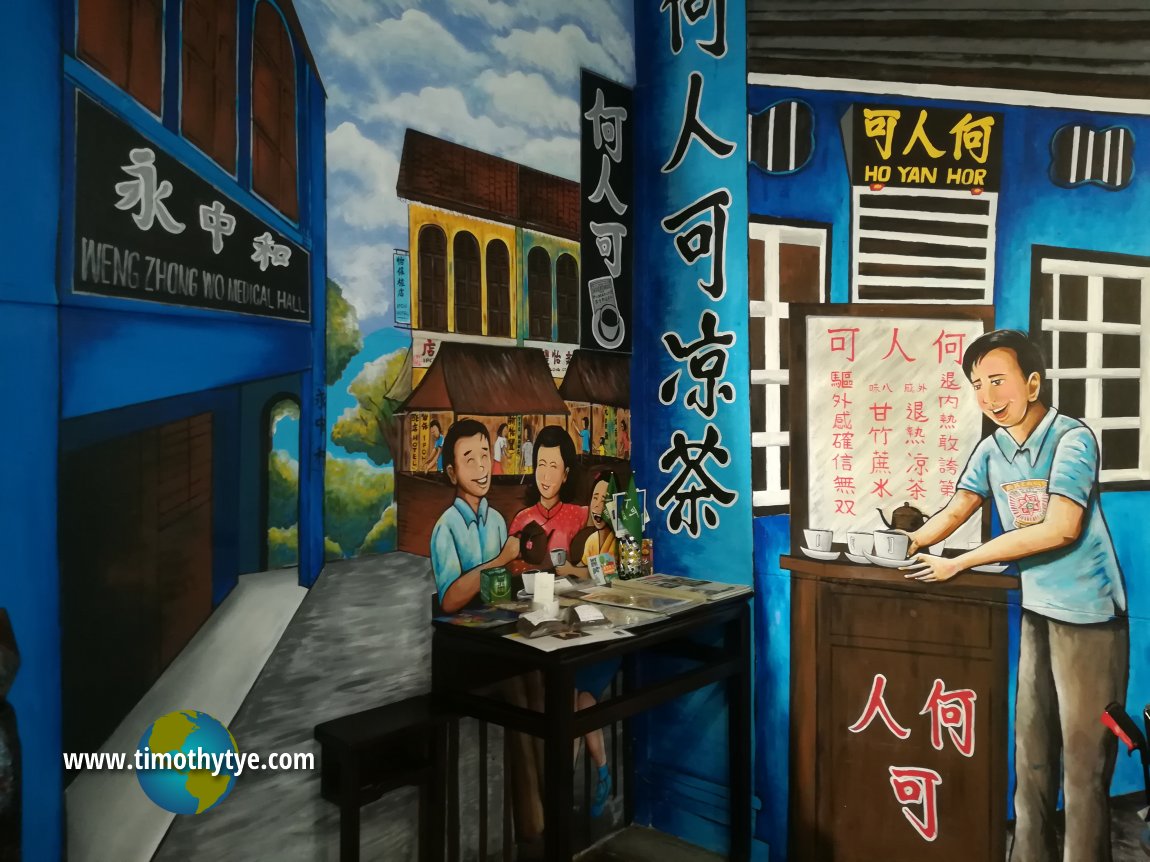 Weng Zhong Wo Medical Hall is the precursor to Ho Yan Hor. (11 March, 2018)
Weng Zhong Wo Medical Hall is the precursor to Ho Yan Hor. (11 March, 2018)
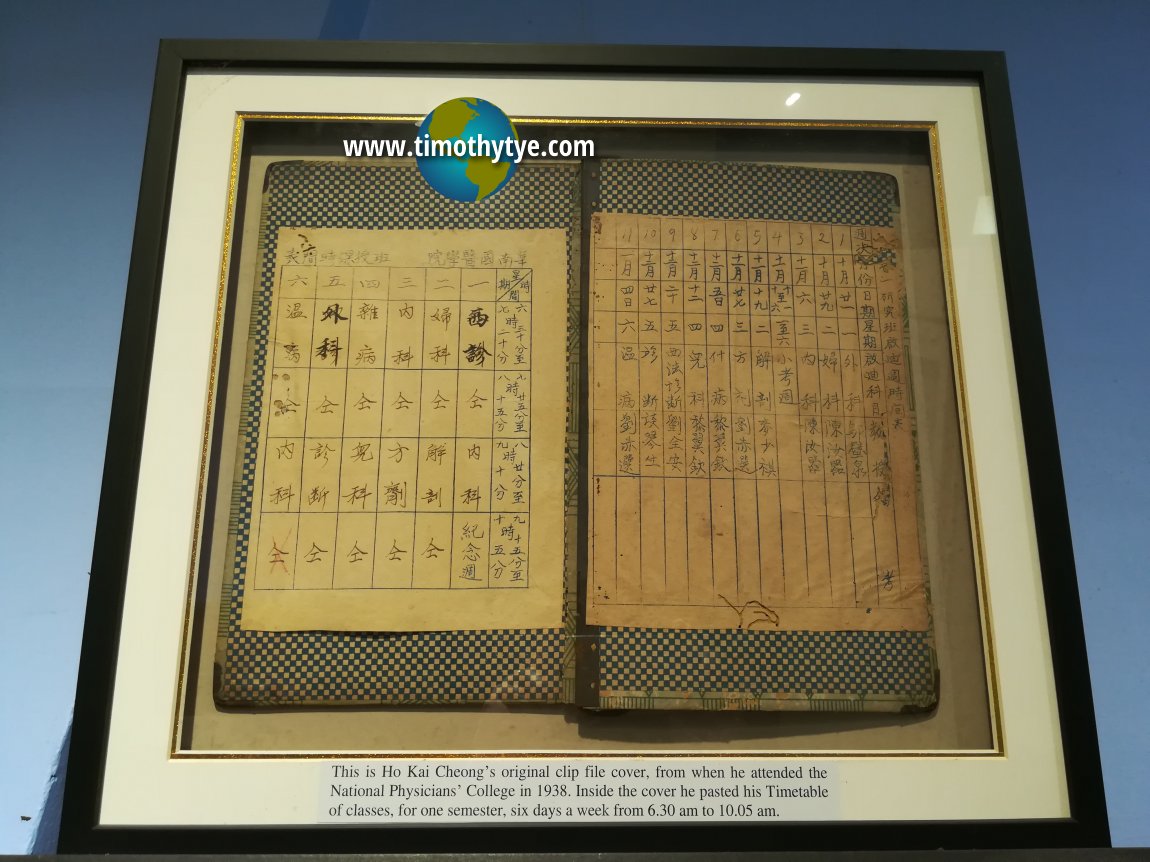 Two pages from history: Ho Kai Cheong's file cover during his time at the Canton Wah Lam National Physician's College in 1938. (11 March, 2018)
Two pages from history: Ho Kai Cheong's file cover during his time at the Canton Wah Lam National Physician's College in 1938. (11 March, 2018)
Malim Nawar in 1941 was under Japanese Occupation. The Japanese had an ammunition factory in the area, and Ho Kai Cheong's activities drew Japanese attention. So they arrested him and interrogated him for seven days. When he was released, he made himself scarce, disappearing into the rural areas and surviving there as a rice planter. During that time, he married his China-born bride, Koo Soon Lian, who originated from Gulao, in the city of Jiangmen in Guangdong Province. They had five children - three girls and two boys.
After the Japanese surrender, Ho Kai Cheong finally reemerged from the rural areas to make a living in town. But being penniless, he was unable to reestablish his medicine shop, and was forced to work in a sundry shop. One day, he received an advice from a good friend and mentor, one Mr Yew Song Pak, who told him that if he could not open a shop, at the very least, he could start at a smaller scale.
Ho Kai Cheong worked upon the advise and started selling his herbal tea, setting up a tea kiosk on Treacher Street (which is today known as Jalan Bijeh Timah). The year was 1945, and it is also - if I am not mistaken - the year that Ho Kai Cheong made his home at 1, Treacher Street (premises of Ho Yan Hor Museum).
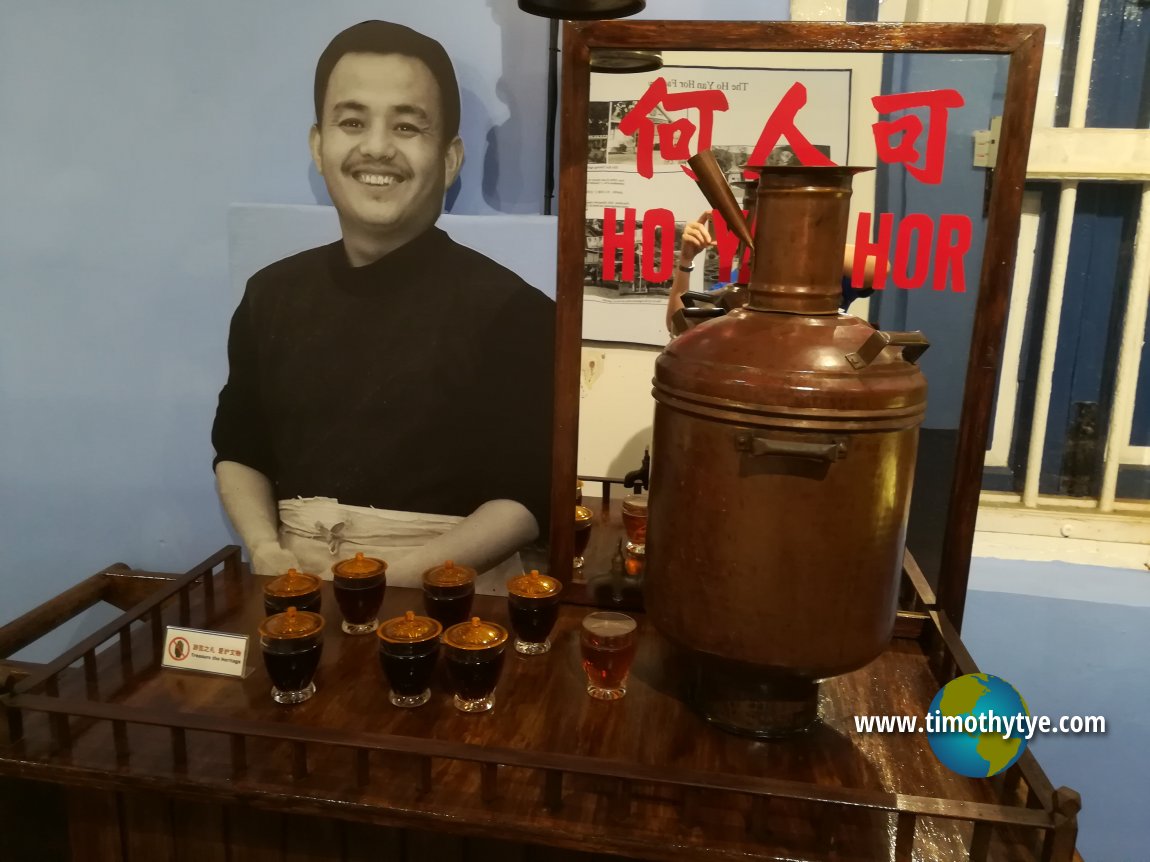 Chinese herbal tea kiosk. (11 March, 2018)
Chinese herbal tea kiosk. (11 March, 2018)
As his business started to expand, Ho Kai Cheong came upon the idea of distributing his medicinal herbal teas to other towns. That was in 1947. While his wife stayed back to look after his stall, he would cycle to various towns, peddling his tea to sundry shops and Chinese medical halls, to as far as Changlun in Kedah, Cameron Highlands, and way south in Seremban and Malacca. And he did that on bicycle!
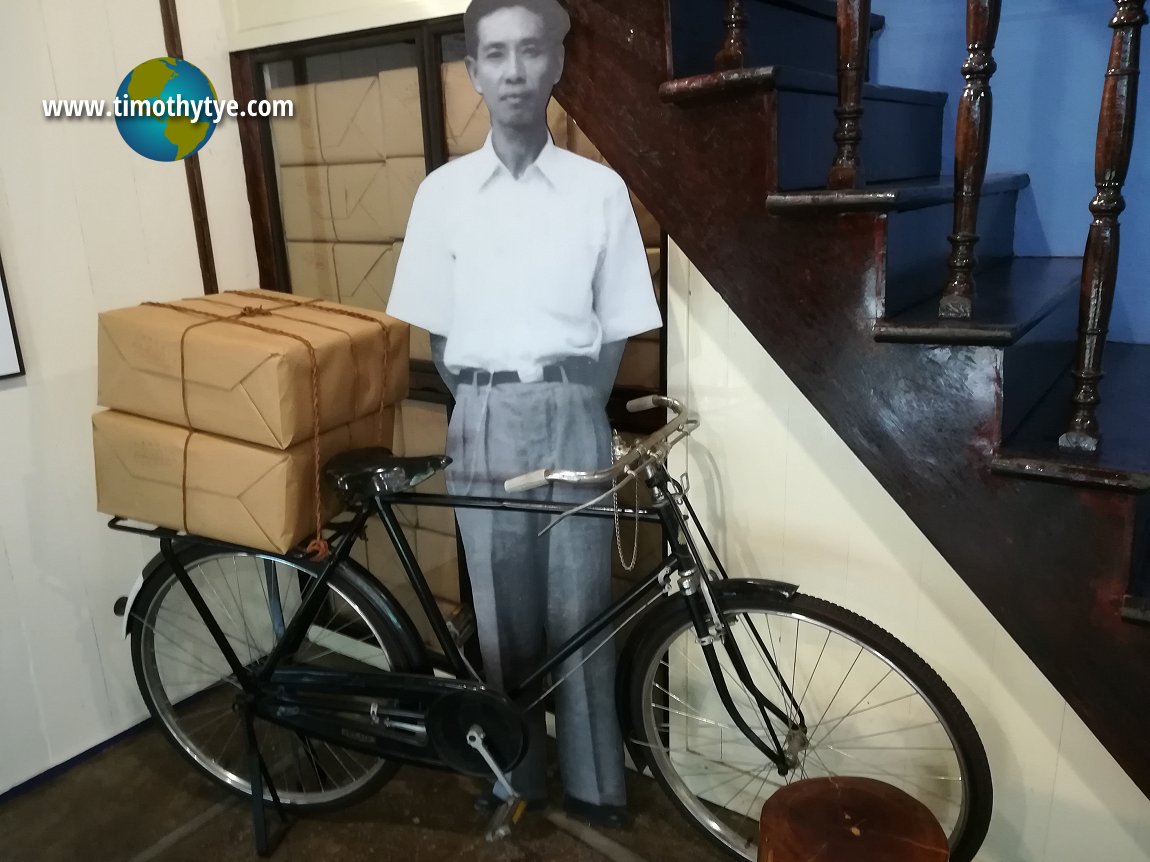 The itinerant herbal tea man diligently expanded his distribution across the west coast of the peninsula on bicycle. (11 March, 2018)
The itinerant herbal tea man diligently expanded his distribution across the west coast of the peninsula on bicycle. (11 March, 2018)
Meanwhile 1, Treacher Street was officially set up as the Ho Yan Hor Medical Hall in 1948. Ho Kai Cheong did not have to cycle for long, for in that same year, he bought his first car, a Morris Minor Tourer. Three years later, he added a Fordson Van to his fleet. Fortune smiles at the industrious, and in that same year, 1951, he also bought a 3-acre piece of land off Jalan Kuala Kangsar in Ipoh, in which he built the Ho Yan Hor factory, which still occupies the premises today, under the Hovid name (GPS: 4.628027, 101.082521).
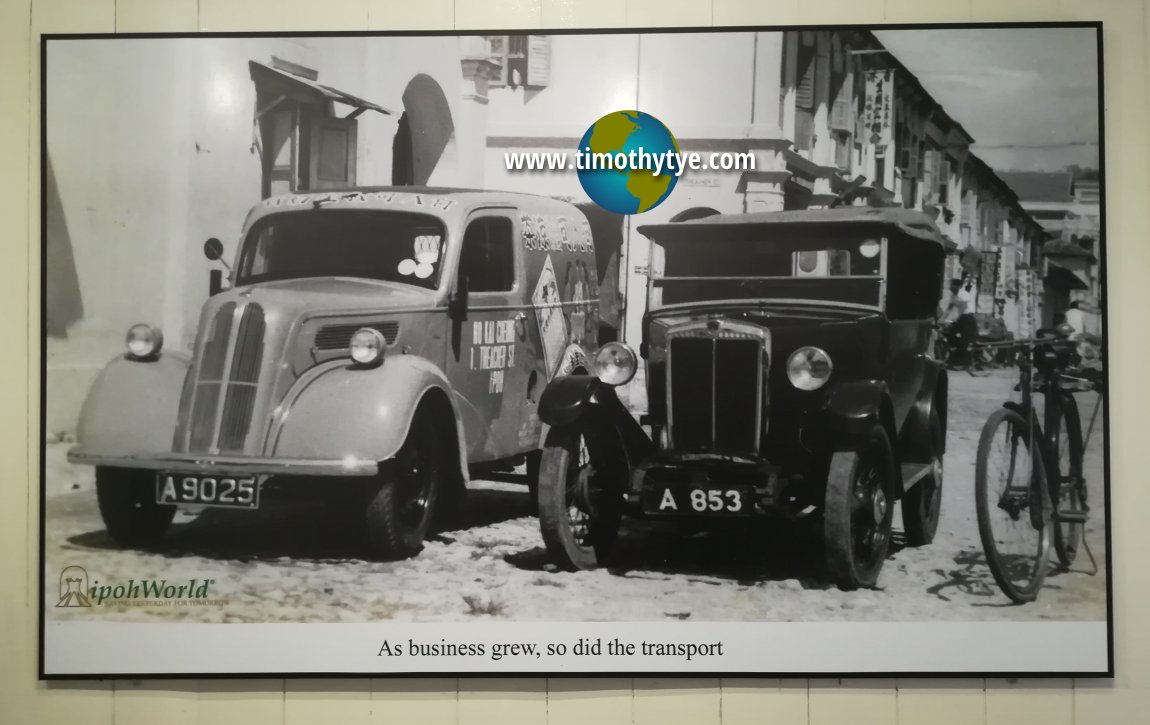 Ho Kai Cheong's expanding fleet (right to left): from bicycle to Morris Minor to Fordson van. (11 March, 2018)
Ho Kai Cheong's expanding fleet (right to left): from bicycle to Morris Minor to Fordson van. (11 March, 2018)
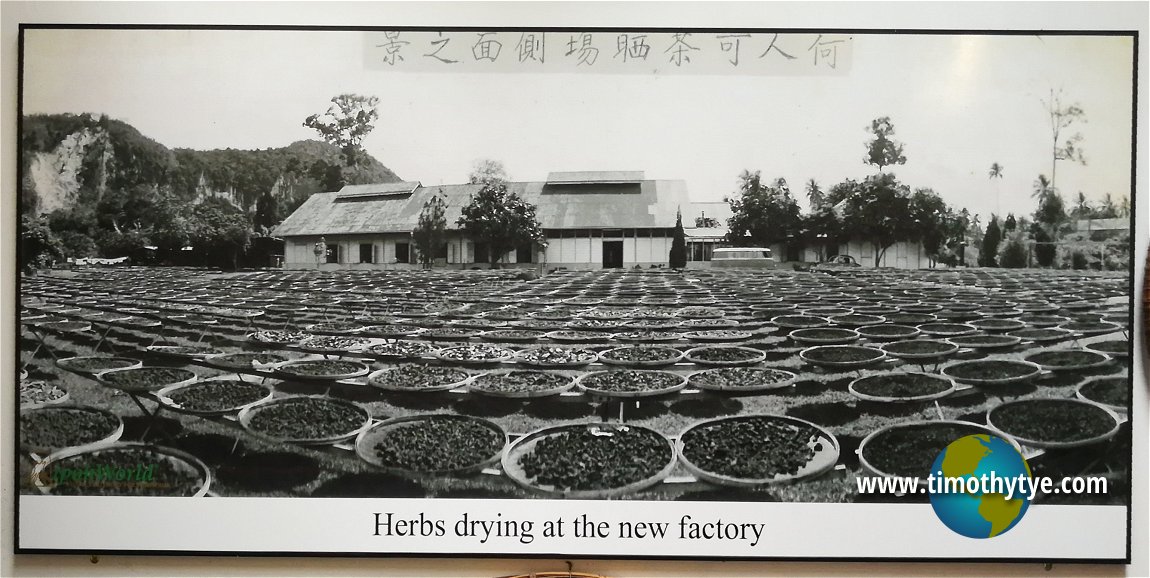 The herbs drying at the new factory off Jalan Kuala Kangsar, Ipoh. (11 March, 2018)
The herbs drying at the new factory off Jalan Kuala Kangsar, Ipoh. (11 March, 2018)
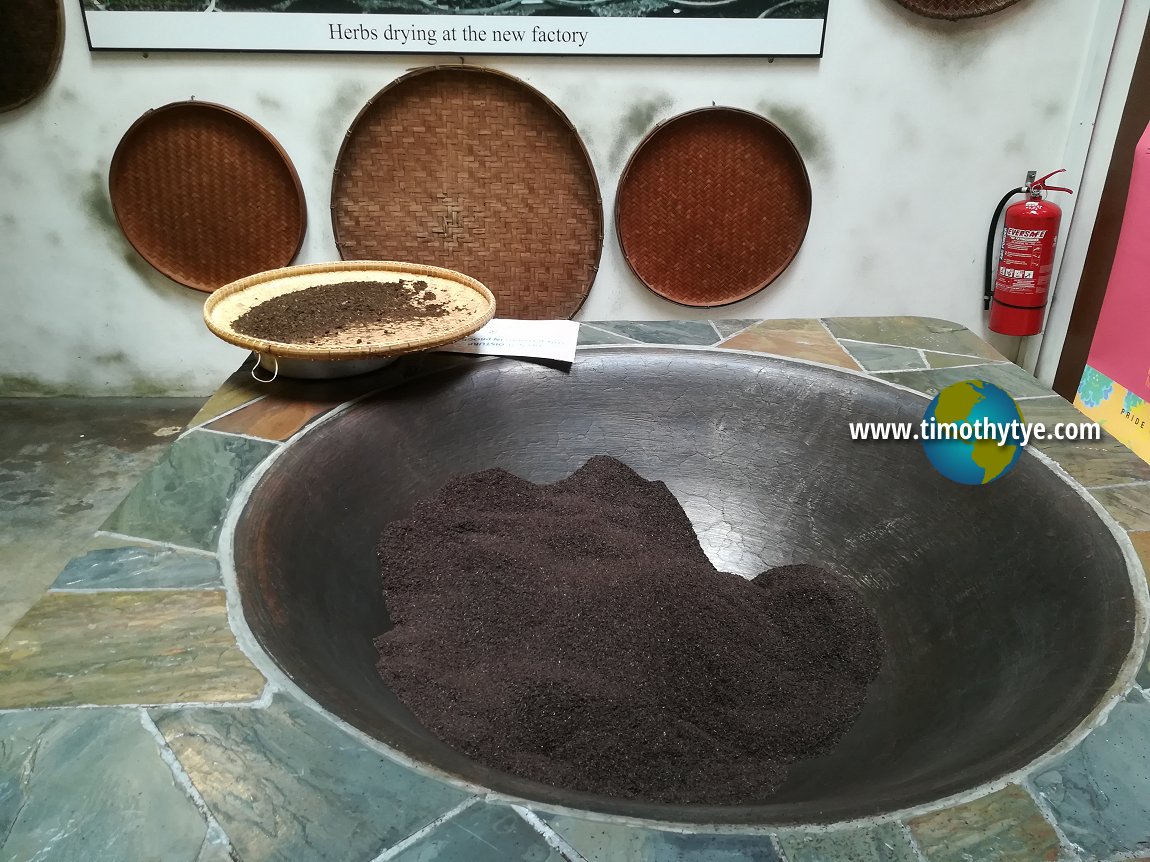 The herbal teas are fried in huge woks like this one. (11 March, 2018)
The herbal teas are fried in huge woks like this one. (11 March, 2018)
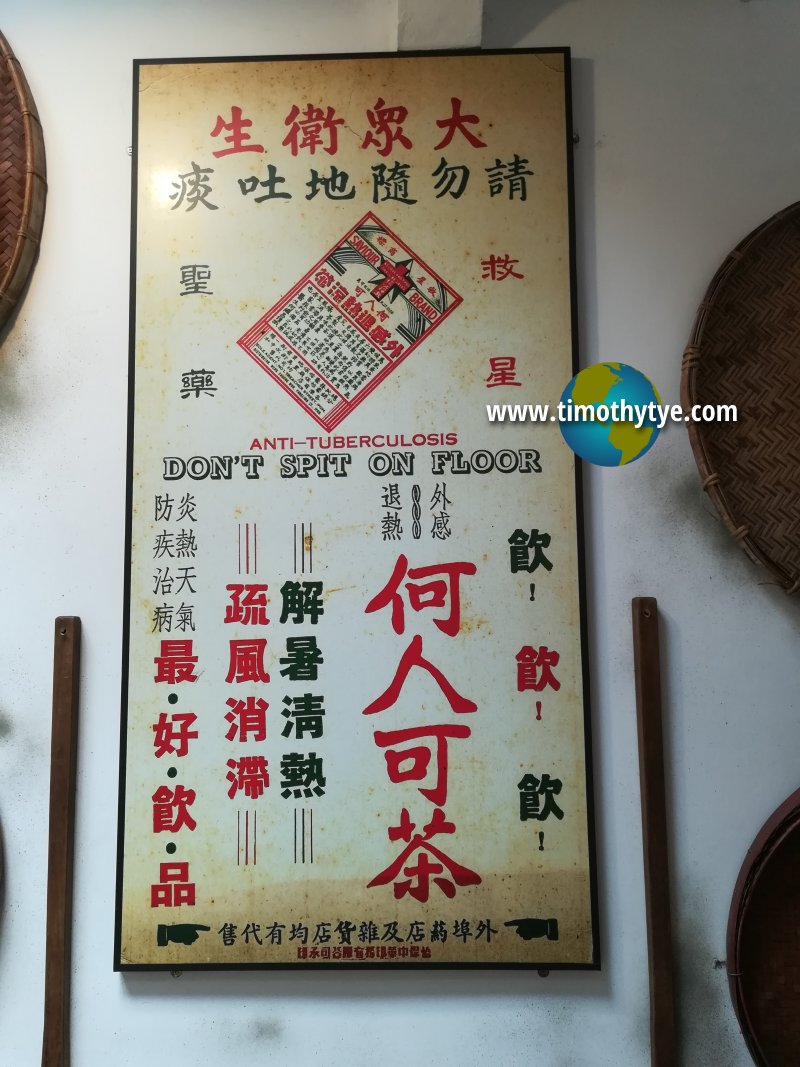 An early Ho Yan Hor advertisement. (11 March, 2018)
An early Ho Yan Hor advertisement. (11 March, 2018)
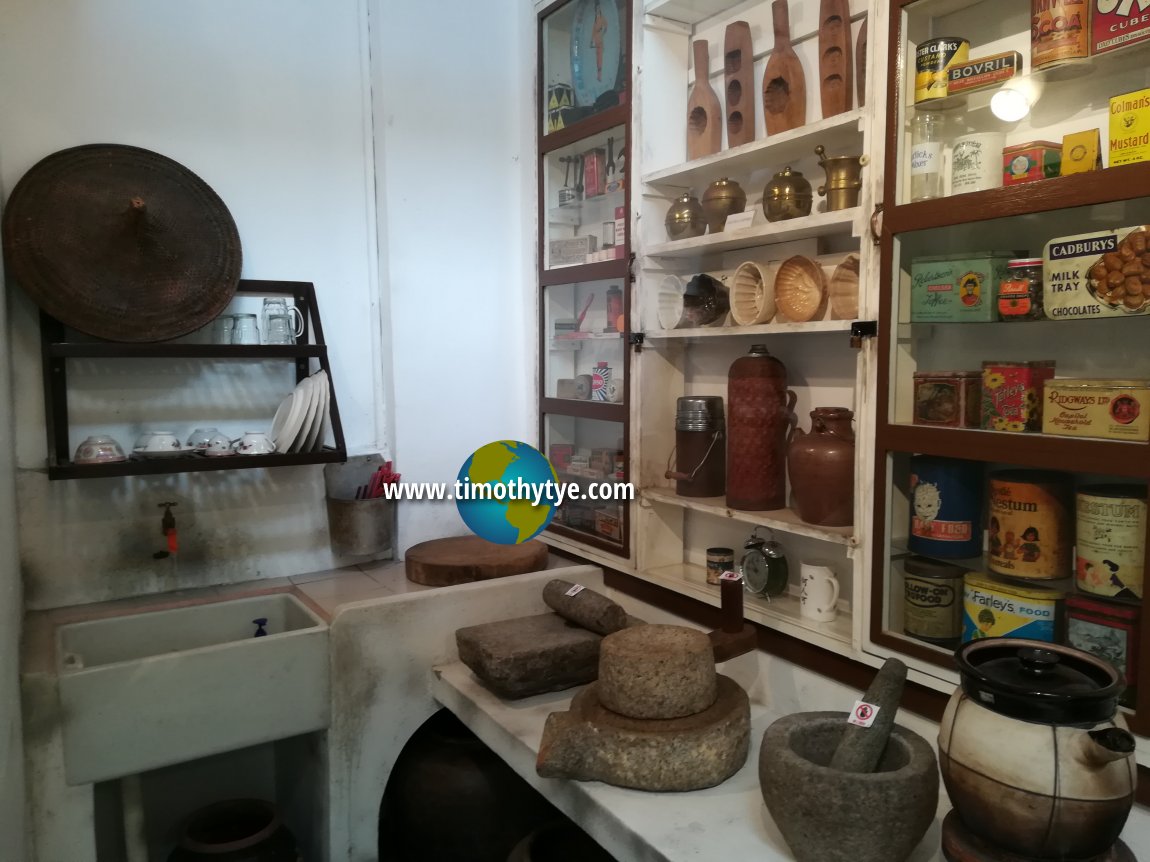 Mrs Ho's kitchen occupies the back portion of 1 Treacher Street. (11 March, 2018)
Mrs Ho's kitchen occupies the back portion of 1 Treacher Street. (11 March, 2018)
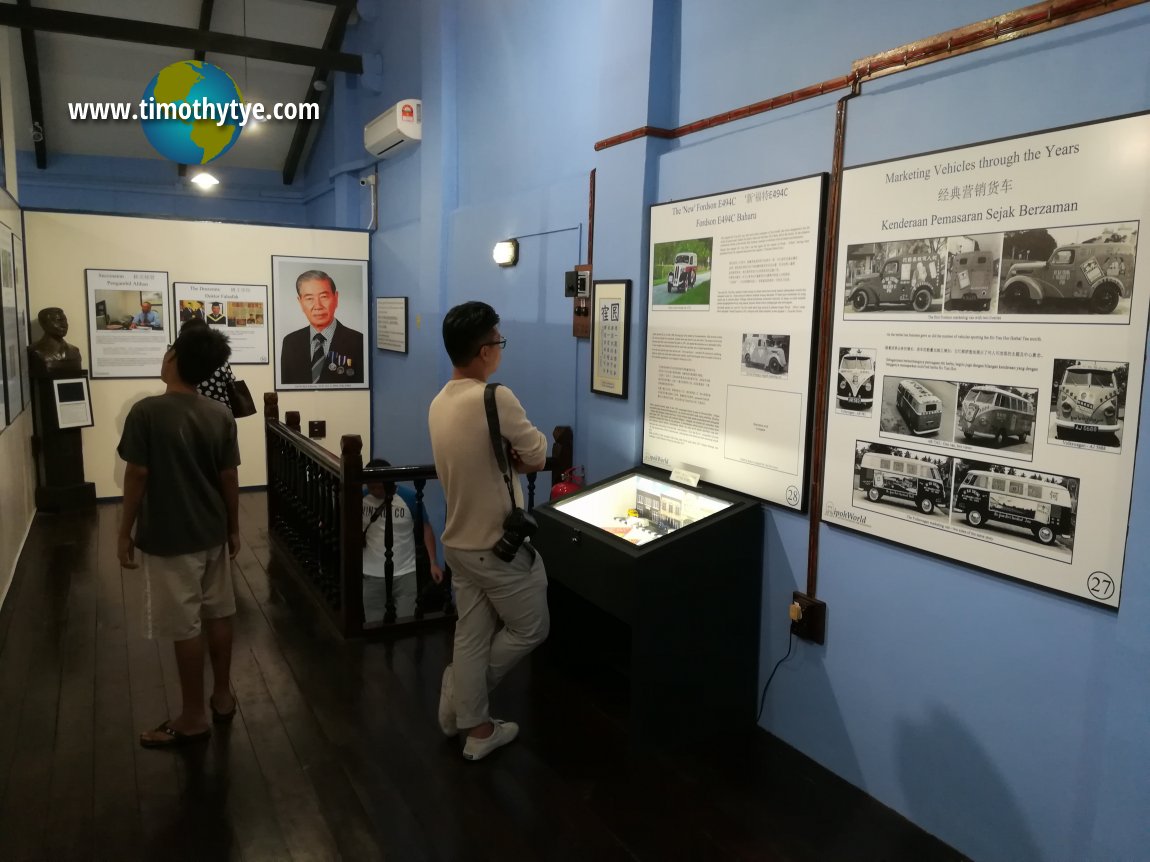 Visitors admiring the exhibits at the Ho Yan Hor Museum. (11 March, 2018)
Visitors admiring the exhibits at the Ho Yan Hor Museum. (11 March, 2018)
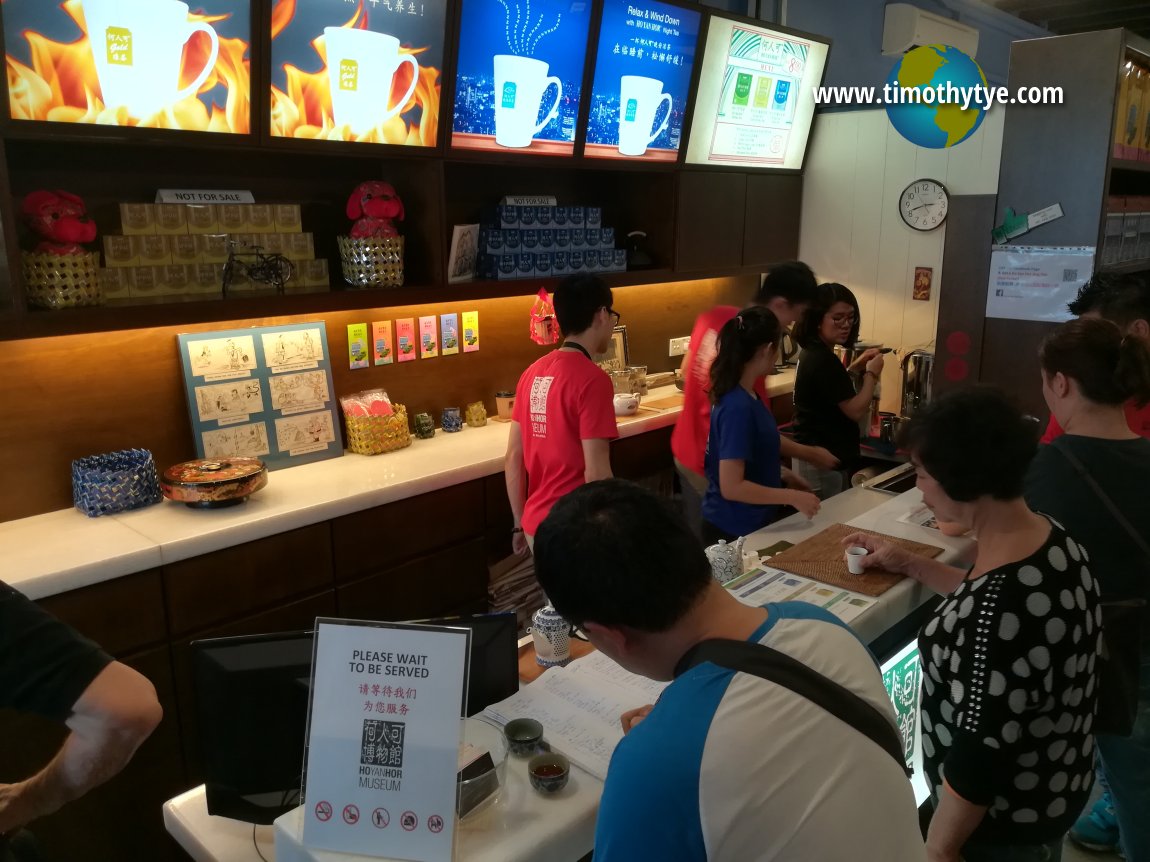 The tea kiosk at Ho Yan Hor Museum, where visitors get to sample the various herbal teas. Souvenir packs are available for purchase here. (11 March, 2018)
The tea kiosk at Ho Yan Hor Museum, where visitors get to sample the various herbal teas. Souvenir packs are available for purchase here. (11 March, 2018)
Ho Yan Hor Museum on Google Maps Street View
1, Jalan Bijeh Timah, before the Ho Yan Hor Museum was established (Apr 2014)Ho Yan Hor Museum is  on the Map of Ipoh
on the Map of Ipoh
Acknowledgement
I wish to thank Ian Anderson for taking my wife and me on a tour of the Ho Yan Hor Museum, and helping us appreciate the history of this marvellous company.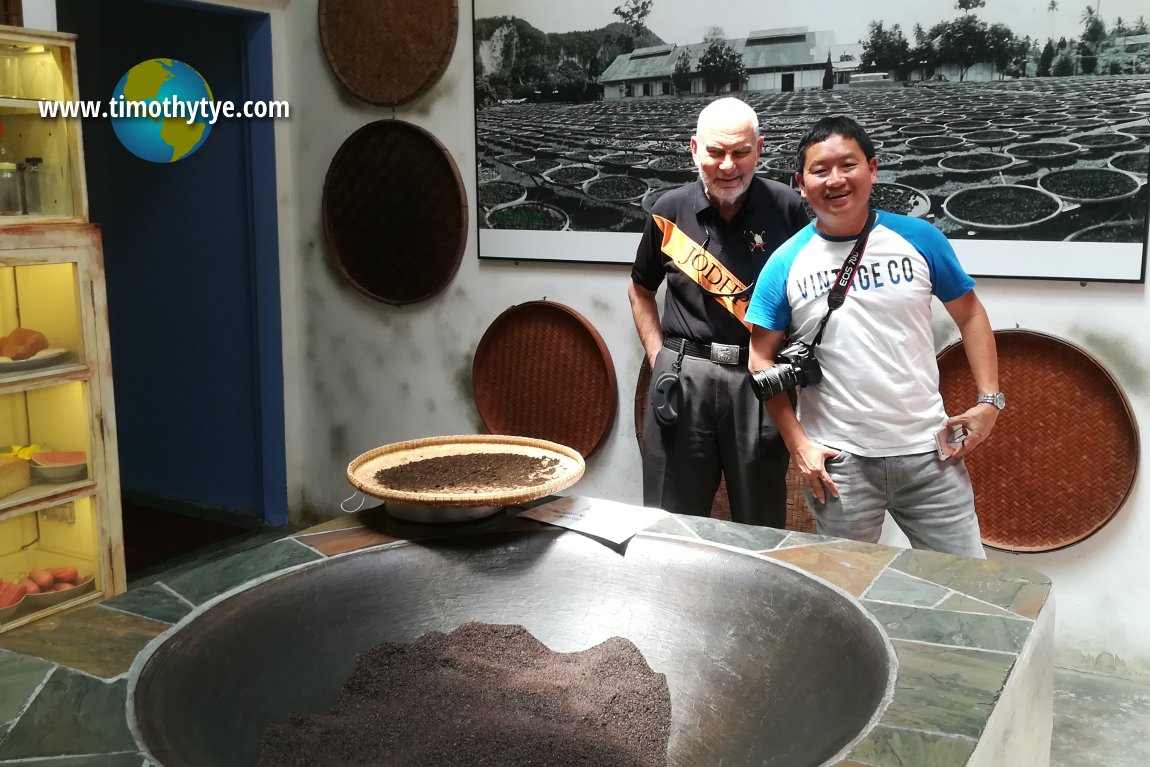 Ian Anderson and I at the Ho Yan Hor Museum. (11 March, 2018)
Ian Anderson and I at the Ho Yan Hor Museum. (11 March, 2018)
Back to Discover Ipoh, Perak; list of Museums in Ipoh, Museums in Perak and Museums in Malaysia
 Latest updates on Penang Travel Tips
Latest updates on Penang Travel Tips
 Ipoh Sight Index
Ipoh Sight Index
 Streets of Ipoh
Streets of Ipoh
 Map of Ipoh, Perak
Map of Ipoh, Perak
 Discover with Timothy Ipoh Videos
Discover with Timothy Ipoh Videos
Where to go, what to see when in Ipoh? Here are some suggestions with my videos!
Copyright © 2003-2025 Timothy Tye. All Rights Reserved.

 Go Back
Go Back